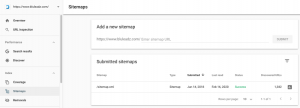Plus, it won’t be easy to break away from 3rd-party cookies
Marketing Land’s daily brief features daily insights, news, tips, and essential bits of wisdom for today’s digital marketer. If you would like to read this before the rest of the internet does, sign up here to get it delivered to your inbox daily.
Good morning, Marketers, I’m wondering how much marketing plans have changed over the last year.
In today’s newsletter, Ryan Phelan walks through the transformation marketers had to undergo with rapid-fire responses to lockdowns, as well as public health and economic crises. Many companies pulled back or significantly altered their budgets with little warning.
One of his suggestions is for marketers to go back to their marketing plan from March 2020. The theory is that with the world opening back up, it’s time to transition out of “crisis-mode planning.” What were our longer-term goals back then? And has 2020 caused you to change those?
As you’ll see below, marketers are still “very” or “moderately” reliant on third-party cookies. This might be nudging publishers toward opening up more of their premium inventory to programmatic exchanges.
One thing is certain, this period of change isn’t over. It is very important to capture the lessons we’ve learned as we continue to navigate this transformation. If you do look back at your March 2020 plan, let me know what part of it has changed the most at cwood@thirddoormedia.com.
Chris Wood,
Editor
80% of marketers still “very” or “moderately” reliant on third-party cookies
As more brands implement identity resolution strategies and technologies, there are still significant challenges to their success. Customer data is scattered throughout the enterprise, often residing in silos that hinder marketers’ ability to develop and nurture relationships.
A consumer might show up under different identifiers when researching something on one device (i.e., desktop cookie or login name), calling on another (i.e., mobile phone) and then buying something in the store (i.e., loyalty ID or credit card). Each of these identifiers can live in a different department with disparate collection and matching requirements.
Marketers also are losing access to some forms of data, including third-party cookies and location, a result of Google and app developers providing more tools to protect consumer privacy. Just 11% of Android users and 10% of iOS users agree to share location data with apps, an analysis of 744 million mobile users by Airship found in mid-2020. That’s a fairly small percentage even though one-time and foreground permission options seem to have raised opt-in rates during the pandemic.
Losing data like this is no small blow. A survey of 259 marketers conducted by Phronesis Partners on behalf of Epsilon found 80% reported being “very” or “moderately” reliant on third-party cookies, while fewer than half of those surveyed (46%) feel “very prepared” for the upcoming changes.
Why we care. This suggests that the world of marketing and advertising is still behaving as if third-party cookies aren’t really going away. It reminds us in some ways of the run up to GDPR. This thing is going to happen.
Normal, but different
“Normal” might be returning, even if it’s “new normal.” But don’t leave what you learned in 2020 behind. That’s the message from digital marketing leader Ryan Phelan in his latest strategic planning article.
Phelan offers this advice:
- Start processing what happened;
- Recover the plan you threw away in March 2020;
- Keep your eyes on the news (we’re not done yet); and
- Look for ways to streamline your production process.
Among other things, 2020 will have taught you how to make processes lean and swift, even if steps were skipped along the way. There are valuable lessons there.
“Today, our customers know what we’re doing to protect everybody from infection because we explained it in our email message footers all last year,” said Phelan. “Today, consumer confidence is rising. Coresight Research documents customers’ increasing willingness to return to in-store shopping, go out to eat, travel, and gather in large public spaces. But we have to temper this growing confidence with renewed apprehension over vaccination objections, more virulent strains of COVID-19 and a sudden spurt of new infections. We’re not out of the woods yet, but our customers are anxious to achieve a semblance of normalcy.”
Publishers seek “premium” programmatic deals
In the quest to stay afloat in the cookie-less future, publishers might be looking to open up more substantial programmatic deals and inventory.
In fact, many publishers want automated deals that have the scale of open auctions, paired with the measurement and control they can offer advertisers through direct sales, Enterprise SaaS adtech company FatTail found in a new survey of publishers conducted with marketing consultants Beeler.Tech and CoLab Media Consulting. The study also suggests that as the industry moves beyond third-party cookie-based targeting, the desire for such “premium” programmatic sales will accelerate.
The majority of the 95 publishers surveyed said they were anticipating increased spend in Programmatic Guaranteed, PMPs (private marketplaces) and Preferred Deals, all three types designated by FatTail under the “premium programmatic” segment. The study reported that 18% of publishers thought the volume of indirect inventory sold by RTB (real-time bidding) and/or open auction would decrease in the next year. Other findings include:
- On average, direct sold inventory accounts for 39% of publisher revenue with (digital) programmatic accounting for 28% of overall publisher revenue;
- 66% of respondents expected growth in Programmatic Guaranteed;
- 60% of publishers forecasted growth in Preferred Deals and PMPs; and
- 585 of publishers said advertiser demand would be driving these shifts toward more “premium” programmatic transactions.
Why we care. Automating remnant buys were always a useful application for programmatic selling. As the adtech ecosphere continues to mature, technology can also be used to increase the value of more premium inventory bought programmatically. For publishers, making more of this premium inventory available through programmatic exchanges opens up sales opportunities to more buyers overall.
Quote of the day
“Some day B2B will wake up and understand you have to create a connection to your brand and your business. Measure all day long on pipeline and revenue but the customer experience is what matters.” Karen Steele, marketing advisor, founder of Alloy
Marketing Land – Internet Marketing News, Strategies & Tips
(55)
Report Post






